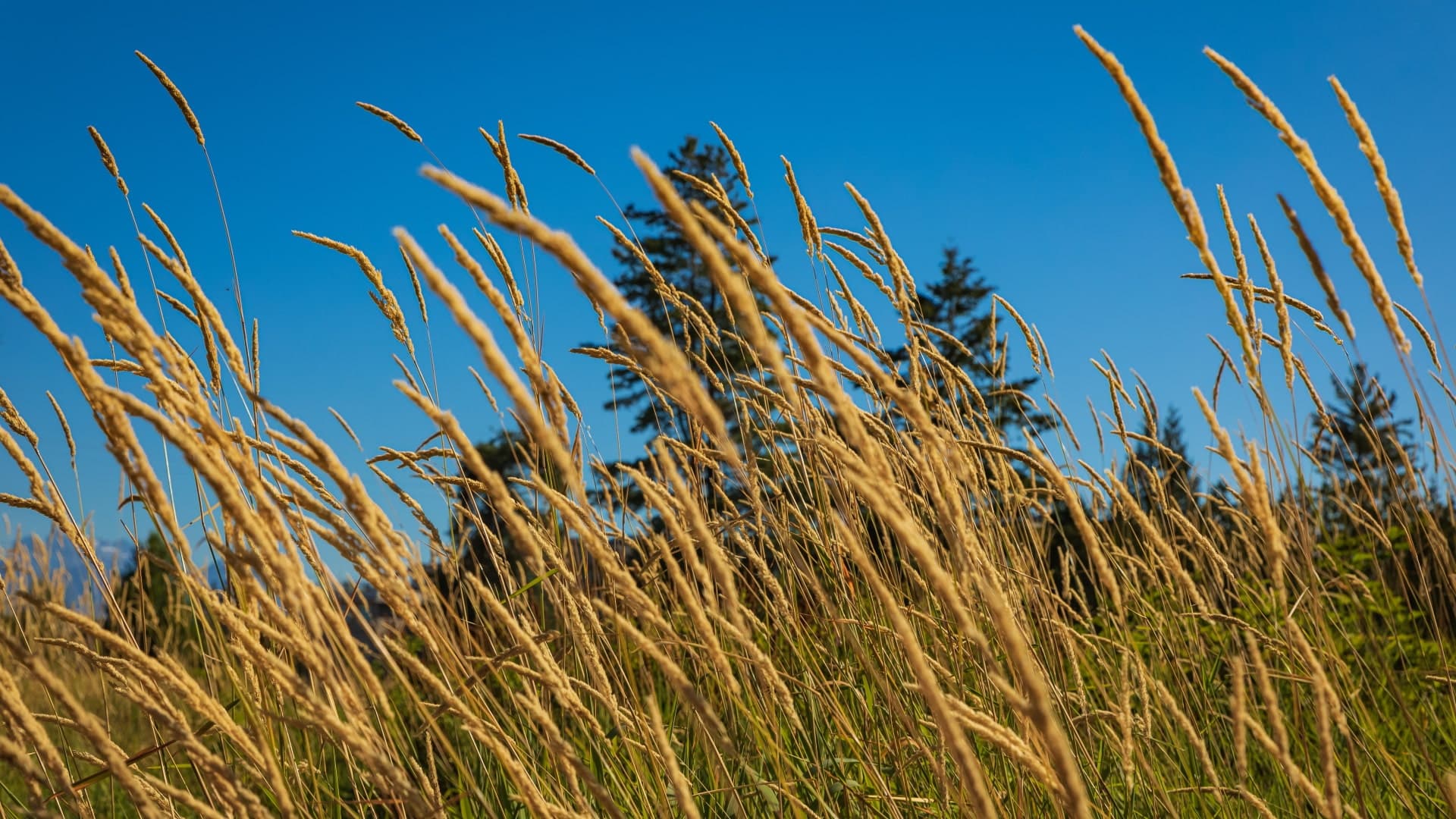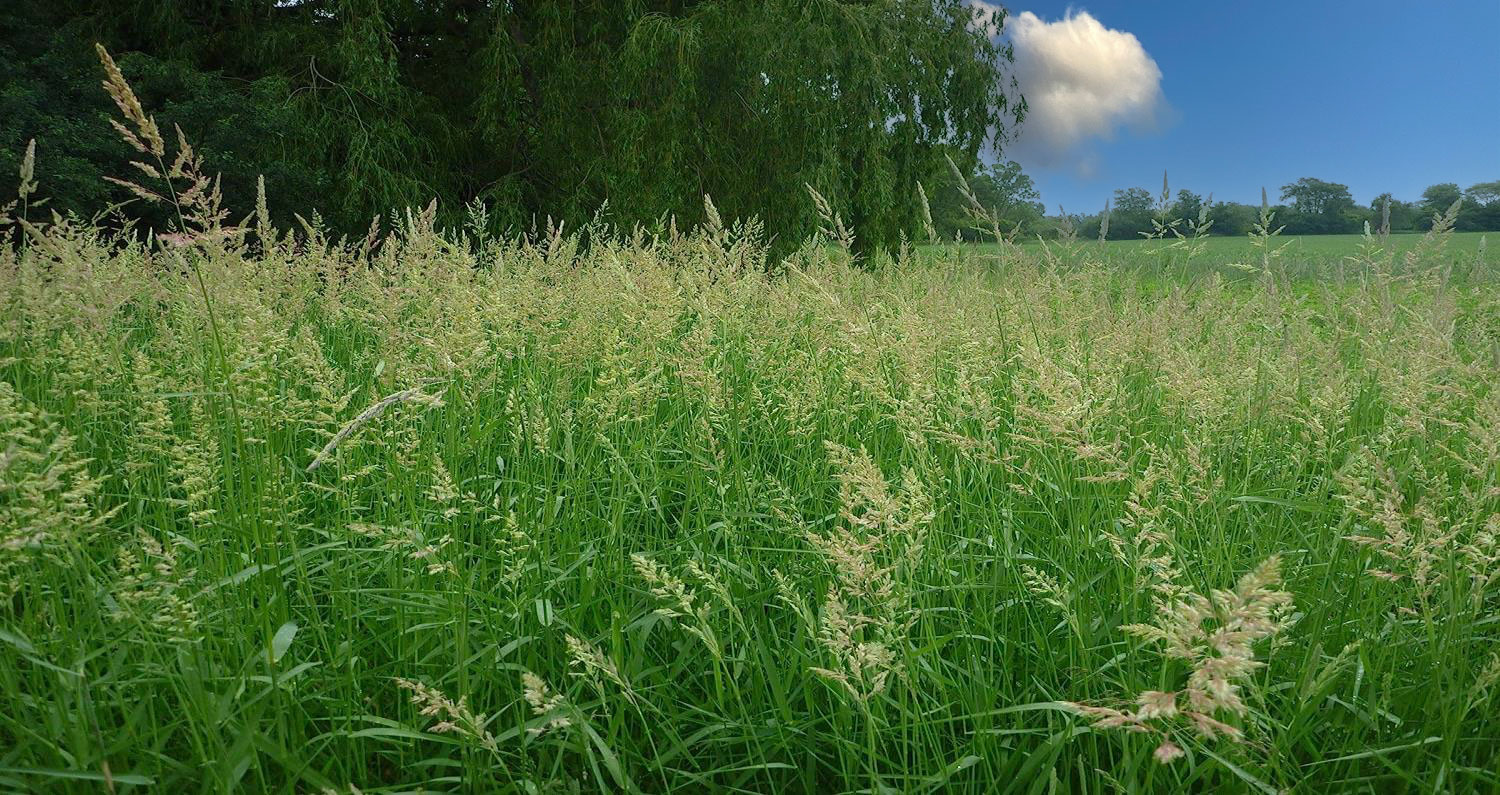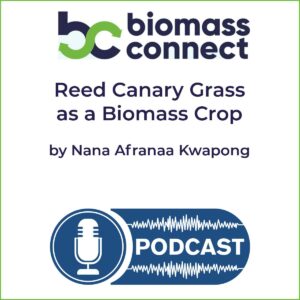Reed Canary Grass
Phalaris spp. Phalaris arundinacea
General info
Reed canary grass is a multipurpose, lignocellulosic perennial crop native to Europe, Asia, and North America. It can be grown on poorly productive land and tolerates a wide range of conditions. Reed canary grass is found in diverse habitats including wetlands and riparian zones but also drier areas like roadsides, forest margins, pastures, and disturbed areas. It is a fast-growing crop reaching heights of 1.5-2 m in a growing season, and, depending on management, can remain productive for 5-10 years.
Cultivation and agronomy
Reed canary grass is planted by seed. It requires a firm, smooth seedbed and timely weed control during establishment, with fertilizer where nitrogen is limiting. Reed canary grass is highly tolerant to waterlogging (established stands can tolerate extended periods of inundation) and a wide pH range from pH4.9 to pH8.2. It can thrive on marginal land unsuitable for food or feed production. Once established, it is one of the most productive temperate grasses during drought due to its deep rhizome and root system. As a temperate grass used extensively in Scandinavia, it is also highly tolerant of freezing conditions.
Average yields of 5-7 tonnes per ha are achievable in the UK, depending on management. Harvesting can be conducted with conventional grass harvesting machinery and usually commences from the second year after sowing. The timing of harvest depends on the intended market/end-use. Forage quality is best in spring and early summer, while harvest for anaerobic digestion can extend from summer until autumn senescence begins. RCG disease levels are relatively low and are not considered a cause for concern. However, RCG can be attacked by insect larvae, which feed inside stem bases and can occasionally significantly reduce yield.
Return to crops overview
Relevant research
Landström, S., Lomakka, L., & Andersson, S. (1996). Harvest in spring improves yield and quality of reed canary grass as a bioenergy crop. Biomass and bioenergy, 11(4), 333-341.
Jensen, E. F., Casler, M. D., Farrar, K., Finnan, J. M., Lord, R., Palmborg, C., … & Donnison, I. S. (2018). Reed canary grass: from production to end use. Perennial Grasses for Bioenergy and Bioproducts, 153-173.
Additional Resources from Biomass Connect
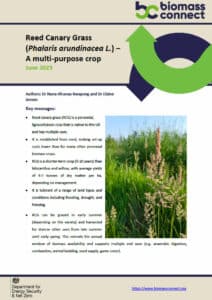
Read our Reed Canary Grass Technical Article
Take 5 minutes out of your day to listen to Dr. Nana Afranaa Kwapong talk about Reed Canary Grass as a Biomass Crop.
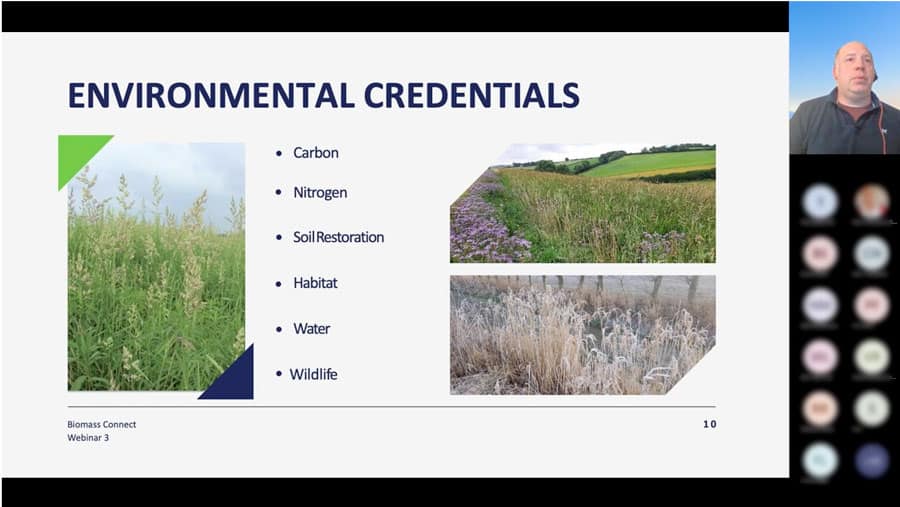
Watch John Hawkin’s Biomass connect webinar on Reed Canary Grass: Biomass Crops some Interesting Alternatives.
